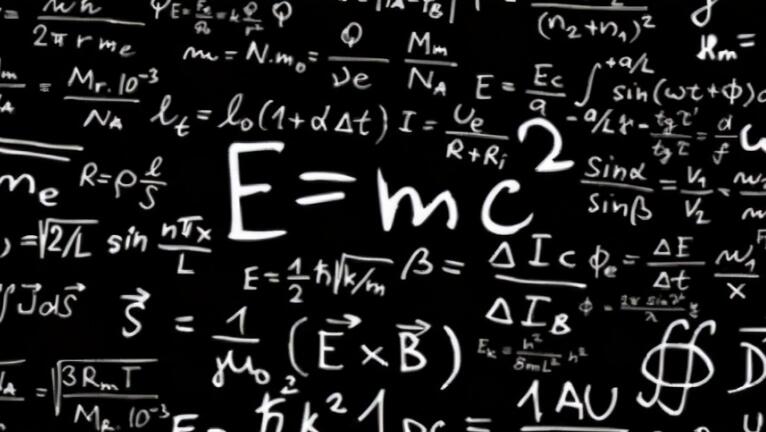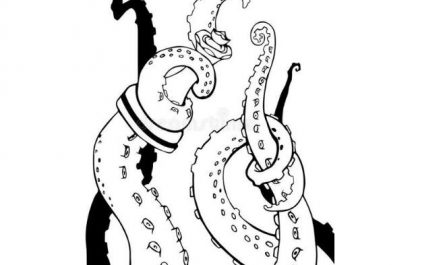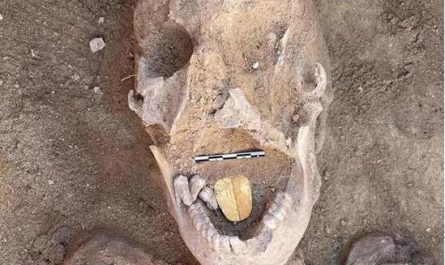Why does the atomic bomb have such a high energy?
I believe that many friends can answer this question. This is because the atomic bomb uses heavy nuclear fission, but when a uranium-235 nuclear fission is called barium-141 and krypton-92 nuclei, it will lose a little bit of mass, and this lost mass It will be completely converted into energy by means of mass-energy conversion, and the formula is as follows:
Since the mass is multiplied by the square of the speed of light, so as long as a little loss of mass, the energy produced is astronomical. For example, the Hiroshima atomic bomb was loaded with about 60 kilograms of uranium, but only 1 kilogram of uranium was fissioned, producing about 1 The mass loss of grams, the converted energy is as high as 20,000 tons of TNT equivalent.
Why did Einstein know the mass-energy formula before the atomic bomb?
Friends who study science should be very clear that Einstein proposed the mass-energy equivalence formula in the inference of the special theory of relativity. On September 26, 1905, Einstein published “On the Electrodynamics of Moving Objects”, September 27 “Is the inertia of an object related to the energy it contains?” “. Published two Nobel Prize-level papers for the first time in a day, it is really great!
So many friends are stunned, but in fact this is a manuscript submitted by Einstein more than 3 months ago. The former is a paper called special relativity by later generations, and the latter is the description of the mass-energy equivalence equation, which is what we are familiar with. E=MC?. What is even more surprising to everyone is, “Is the inertia of an object related to the energy it contains?” “There are only a few pages, but the answer given is shocking.
This is the inference of the special theory of relativity. It describes the calculation formula of the energy change contained in the object under the premise of the Lorentz transformation of the effect of mass increase and the superposition of the velocity. Its derivation process is not complicated. There are only a few steps in the following figure:
Perhaps Einstein felt that the derivation of this formula was too simple to explain clearly the origin of the square of C?, so many scientists at that time raised objections, but there was no problem in deriving the origin of C?.
Now there are scientists who derive the mass-energy equivalence equation based on the kinetic energy and potential energy formula and Schwarzschild’s radius. Compared with the latter, it is more intuitive and easier to understand. Friends who are interested can search for Jim Bagot in his book ” Derivation of “Quantum Space”.
In 1905, Rutherford’s alpha particle scattering experiment found that the nucleus was four years away, so Einstein had no idea what the so-called atomic bomb was, and even atoms were still groping. The timeline of the atomic bomb must span several decades, and the role will be changed, because the invention of the atomic bomb has nothing to do with Einstein.
The discovery of heavy nuclear fission and the atomic bomb
In 1909, Rutherford’s alpha particle scattering experiment discovered atomic nuclei. In 1918, Rutherford discovered protons when alpha particles bombarded nitrogen nuclei. In 1932, British scientist and Rutherford student James Chadwick discovered neutrons. This was a pavement. Since then, Fermi bombarded uranium atoms with neutrons in 1934, producing barium, and the mass was 40% less, because the other is krypton, this gas.
It’s a pity that Fermi didn’t know that this was fission, so he missed a Nobel Prize. Soon after Fermi published his research results, the experiment was repeated by Otto Hahn, Lize Meitner and others, while Hahn strictly analyzed the experimental process. So he discovered the nuclear fission process. On December 22, 1938, Hahn wrote the experimental process as a paper and submitted it to Natural Science. Therefore, the Nobel Prize in 1944 was awarded to Hahn for his great discoveries in nuclear fission.
After the discovery of fission, scientists soon realized that after atomic nuclei fission will lose mass and produce huge energy, and the relationship between these mass and energy can be applied to Einstein’s mass-energy equation, so Einstein is in nuclear fission. Before I found out, the formula was already deduced and waiting for everyone.
But in fact, this energy conversion is fundamentally different from that energy conversion. Many friends have said that mass and energy are equivalent. Even if the energy in a chemical reaction can also be used, why is it different? In fact, the mass lost in nuclear fission of uranium is only about 0.0945%, and Einstein’s mass-energy equivalent is universal for all masses.
Its real meaning lies in explaining the origin of matter in the universe, that is, the transformation process from energy to mass was revealed during the Big Bang. Therefore, the mass equivalence in atomic bombs and hydrogen bombs is “narrow”, while the mass-energy equivalence equation is It is “broad”.
After the outbreak of World War II, scientists worried that Nazi Germany would create the atomic bomb first. Therefore, a large group of scientists wrote to US President Roosevelt suggesting the development of an atomic bomb. What Einstein did was to sign the letter with a big name. After all, no one was there. Louder than Einstein’s name.
In fact, Nazi Germany really started to develop atomic bombs. It was the famous Heisenberg who led the nuclear program, but Germany never went smoothly in its nuclear program. Either the heavy water factory was blown up or the heavy water ship was sunk, or It was Heisenberg’s calculation that was wrong. The uranium charge used to make a nuclear bomb was several tons, but in the end it was not made anyway.
At 5:29:45 on July 16, 1945, the first atomic bomb in human history exploded over the Alamogordo Desert. It was an implosion-type plutonium bomb with a charge of 5 kilograms of gamma-phase plutonium. , 21 days later, over 400 meters above Hiroshima, the little boy uranium bomb exploded, and 24 days later, the Nagasaki plutonium bomb exploded, and mankind has since entered the real nuclear fission era.
In 1951, the first hydrogen bomb device was successfully tested, and it was upgraded to the age of nuclear fusion. Since the hydrogen bomb era, human beings have officially become a species that can destroy themselves, because according to the hydrogen bomb detonation model, an N-phase hydrogen bomb can be formed through multiple secondary stages. Upgrading the power of the hydrogen bomb to “infinite”, according to the existing theoretical model, can reach at least 10 billion tons of TNT equivalent.






